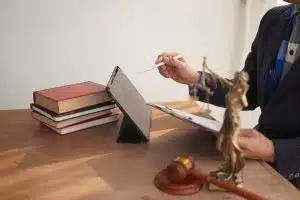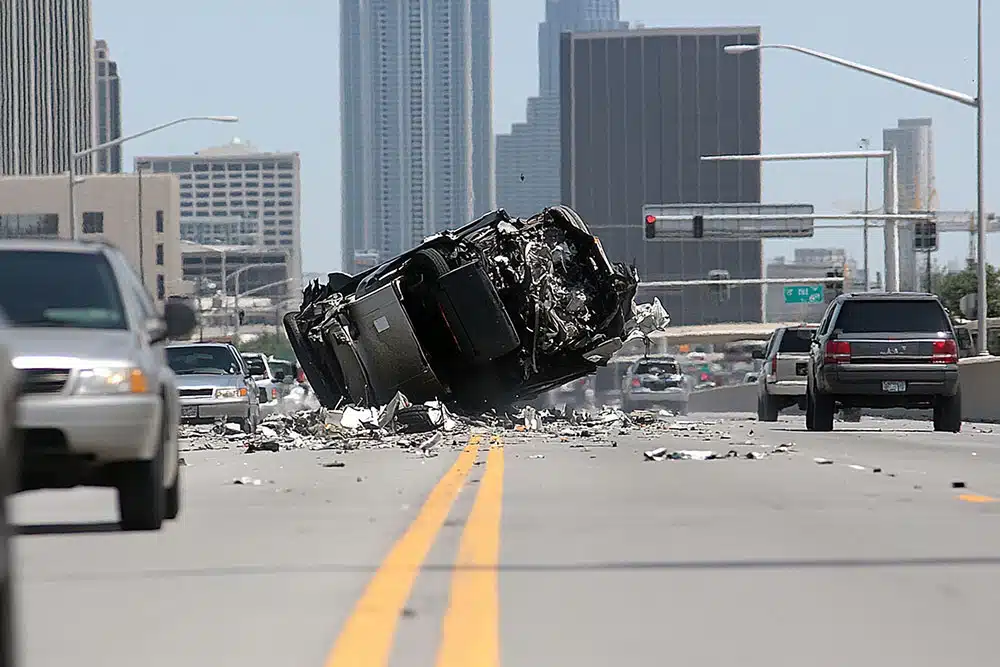
No one can say for certain how long it will take to recover compensation for a pedestrian accident victim’s medical bills and other damages, as numerous factors can influence the timeline of the settlement process.
Understanding these factors and the stages involved in resolving a pedestrian accident claim can help injured clients manage expectations and ensure the best possible outcome.
If you or a loved one was in a pedestrian accident, don’t hesitate to seek the help you need from a trusted pedestrian accident lawyer to navigate this complex process and move forward with your life.
Below, we’ll take a deep dive into the key elements that impact the duration of a pedestrian accident settlement, from the severity of the injuries sustained to the complexity of the case, and provide insights into the average timelines for different scenarios.
Factors Affecting the Settlement Timeline
The timeline for settling a pedestrian accident claim can vary significantly depending on several key factors. These factors can help you set realistic expectations. However, each case is unique, and there’s no way to truly predict how quickly a settlement will take.
Severity of Injuries
In some cases, the severity of a pedestrian’s injuries can play a role in determining the settlement timeline.
- Minor Injuries: If the pedestrian suffered minor injuries, such as bruises, cuts, or sprains, the settlement process may end faster. These cases often involve less extensive medical treatment and lower medical bills, making it easier to reach a settlement agreement. But, this is not always the case and there are times that cases with minor injuries may take time to settle.
- Severe Injuries: When a pedestrian suffers severe injuries, such as broken bones, traumatic brain injuries, or spinal cord damage, the settlement process can take much longer. These cases often require extensive medical treatment, longer recovery periods, and higher medical expenses that the insurance company may not want to pay. It may take time to fully assess the long-term impact of the injuries on the victim’s life, which can prolong the settlement process. Your lawyer may need more time to gather evidence, consult with experts, and build a strong case. Every case is different and every injury is different, so there is no real way of knowing how long your case will take until you receive a settlement or verdict.
Complexity of the Case
The complexity of the pedestrian accident case may also affect the settlement timeline.
- Clear Liability: If the motorist’s liability is clear and undisputed, the settlement process may take less time. For example, the insurance company may settle more quickly if the driver was clearly at fault (e.g., running a red light or driving under the influence). However, there are instances where there may be clear liability and yet, the case may take longer than expected to settle or receive a verdict.
- Disputed Liability: When both sides dispute liability, the settlement process takes more time. If the motorist claims that the pedestrian was partially or fully at fault, the insurance company may refuse to settle or offer a lower settlement amount. Your lawyer may need a more extensive investigation and evidence to prove liability in these cases.
Insurance Company Cooperation
The cooperation and responsiveness of the insurance company handling the claim can significantly affect the settlement timeline.
- Uncooperative Insurers: An uncooperative or unresponsive insurance company can delay the settlement process. Some insurers may deliberately slow down the process, deny liability, or offer low settlement amounts, forcing the victim to pursue lengthy legal action to obtain fair compensation.
Legal Representation
The decision to hire an attorney or handle the case independently can also affect the settlement timeline.
- Hiring an Attorney: Engaging an experienced pedestrian accident attorney can often lead to a more efficient settlement process. Attorneys have the knowledge and resources to gather evidence, negotiate with insurance companies, and advocate for their client’s best interests. They can also help navigate legal complexities and ensure the victim receives fair compensation.
- Handling the Case Independently: If a pedestrian accident victim chooses to handle the case independently, the settlement process may take longer. Without legal representation, the insurance company will try to take advantage of a claimant. The victim may struggle to gather the necessary evidence, communicate effectively with the insurance company, or negotiate a fair settlement. This will lead to delays and almost always lower settlement offers.
These factors can have a bearing on the claims process, but they aren’t a guarantee. Our lawyers have quickly settled cases involving catastrophic injuries with complex liability and have seen cases involving minor injuries with clear liability take much longer to settle.
Stages of the Settlement Process
The settlement process for a pedestrian accident claim typically involves several key stages. These stages can help you know what to expect at each step.
Medical Treatment and Recovery
The first stage of the settlement process focuses on the pedestrian’s medical treatment and recovery.
- Reaching Maximum Medical Improvement (MMI): MMI is when the pedestrian’s condition has stabilized, or has gotten so bad that no further significant improvement is expected, even with additional medical treatment. Wait until you reach MMI before settling the claim to account for the full extent of the injuries and necessary medical care in the settlement.
- Gathering Medical Records and Bills: Throughout the treatment process, keep detailed records of all medical appointments, treatments, and expenses. You need these records to substantiate your pedestrian claim and determine the appropriate settlement amount.
Investigation and Evidence Gathering
Another stage involves conducting a thorough investigation and gathering evidence to support the pedestrian’s claim.
- Police Reports: Obtaining a copy of the police report can provide valuable information about the accident, including the officer’s observations, statements from involved parties, and any citations issued.
- Witness Statements: If witnesses saw the accident, their statements can establish liability and corroborate the pedestrian’s account of the events.
- Accident Reconstruction (if necessary): In complex cases or those involving disputed liability, an accident reconstruction expert may be hired to analyze the scene, vehicle damage, and other evidence to determine how the accident occurred and who was at fault.
Demand Letter and Negotiations
Once the pedestrian has reached MMI and gathered the necessary evidence, the next stage involves sending a demand letter and negotiating with the insurance company.
- Crafting a Demand Letter: The demand letter outlines the pedestrian’s claim, including a description of the accident, the injuries sustained, medical treatment received, and any other damages (e.g., lost wages, pain and suffering). The letter concludes with a demand for a specific settlement amount.
- Back-and-Forth Negotiations with the Insurer: The insurance company will typically respond with a counteroffer after receiving the demand letter. This begins negotiations between the attorney and the insurance adjuster to reach a mutually agreeable settlement amount.
Filing a Lawsuit (if necessary)
If negotiations with the insurance company fail to yield a satisfactory settlement offer, the pedestrian may need to file a lawsuit to pursue the compensation they deserve.
- When Negotiations Fail: If the insurance company refuses to offer a fair settlement or denies liability, the pedestrian may need to file a lawsuit to recover appropriate compensation.
- Timeline for Court Proceedings: The timeline for court proceedings can vary depending on the jurisdiction and the complexity of the case but may involve discovery, depositions, pre-trial motions, and potentially a trial. This process can take months or even years to resolve.
Factors That Can Prolong the Process
Several factors can contribute to a longer settlement timeline, even in cases that initially seem straightforward.
- Ongoing Medical Treatment: If the pedestrian requires ongoing medical treatment or experiences complications during the recovery process, the settlement may take longer. Your lawyer may advise you to wait until you know the full extent of the injuries and necessary medical care before finalizing a settlement to ensure that you receive adequate compensation.
- Legal Complications: Legal complications can also prolong the settlement process. This may include disputes over liability, multiple parties involved in the accident, or complex insurance coverage issues. When legal complexities arise, your lawyer may need additional time for investigation, negotiation, and potential litigation.
- Uncooperative Insurers: An insurer that engages in bad faith tactics can significantly delay the settlement process. This may include failing to respond to communications, denying valid claims, or offering unreasonably low settlement amounts. In these situations, the pedestrian may need to file a lawsuit to compel the insurance company to negotiate in good faith and provide fair compensation.
Tips for Expediting the Settlement Process
While the settlement process for a pedestrian accident claim can take a long time, you can expedite the process and improve your chances of a successful outcome.
Seek Medical Attention Promptly
Seeking medical attention immediately after the accident is crucial for your health, well-being, and legal claim. Prompt medical care helps establish a clear link between the accident and your injuries, and it also ensures that you receive the necessary treatment to begin your recovery.
Delaying medical attention can give the insurance company grounds to argue that your injuries are not as severe as claimed or unrelated to the accident.
Keep Detailed Records
Maintaining detailed records throughout the settlement process can help expedite the claim and strengthen your case. Keep track of all medical appointments, treatments, and expenses.
Detailed records can substantiate your claim and make it easier for your attorney to negotiate a fair settlement on your behalf.
Hire an Experienced Pedestrian Accident Attorney
Working with an experienced pedestrian accident attorney can be one of the most effective ways to expedite the settlement process. An attorney who handles these types of cases will have the knowledge, resources, and strategies to build a strong case on your behalf.
They can handle communication with the insurance company, gather necessary evidence, and negotiate skillfully to secure a fair settlement in a timely manner. Additionally, an attorney can level the playing field and protect your rights.
Be Patient and Persistent
While you may want a quick resolution to your pedestrian accident claim, be patient and persistent throughout the settlement process. Rushing into a settlement before you know the full extent of your injuries can result in accepting a lower amount than you deserve.
Work closely with your attorney, follow their guidance, and trust the process, even if it takes longer than expected.
Contact a Pedestrian Accident Lawyer You Can Trust
Settling a pedestrian accident claim involves a complex and time-consuming process, with timelines varying significantly depending on the case.
The severity of the injuries, the complexity of the case, insurance company cooperation, and legal representation can all affect the duration of the settlement process.
While the settlement process may be challenging, you don’t have to face it alone. With the right legal guidance and support, you can focus on your recovery while your attorney works diligently to protect your interests and pursue the best possible outcome for your case.
If you or a loved one was in a pedestrian accident, don’t hesitate to seek the help you need from a trusted lawyer to navigate this complex process and move forward with your life.
Contact the personal injury attorneys at Rothenberg Law Firm LLP today at (800) 624-8888 or through our online form for your free, no-obligation consultation.





